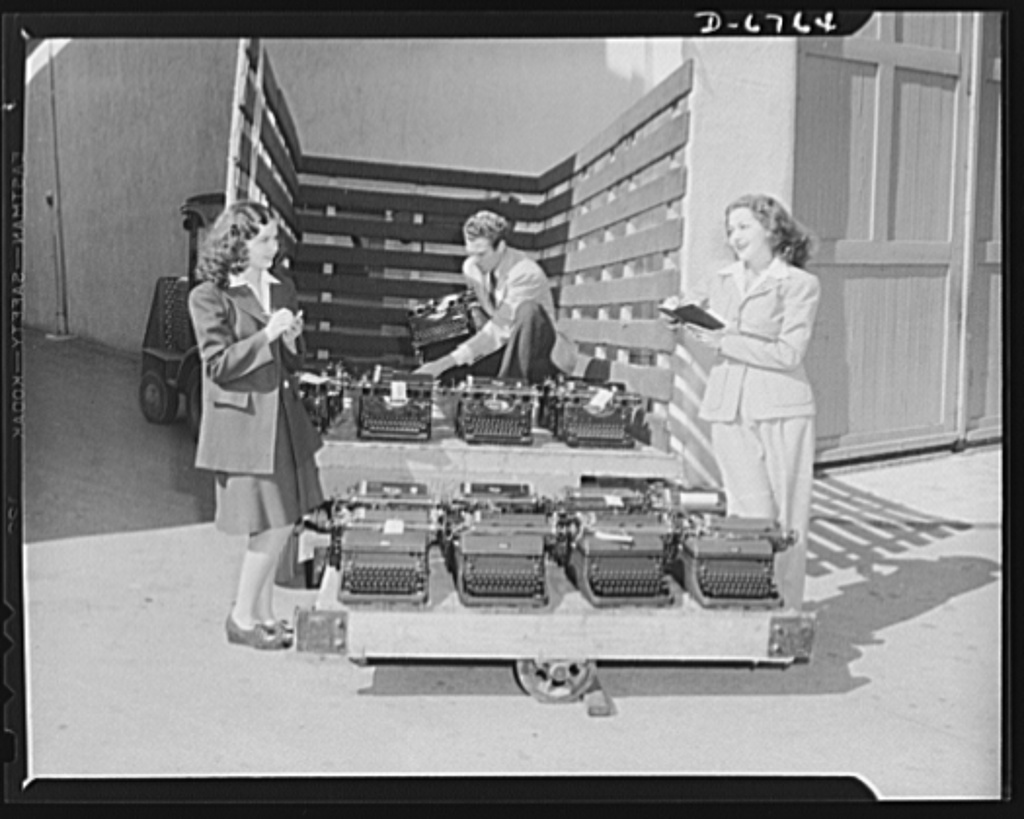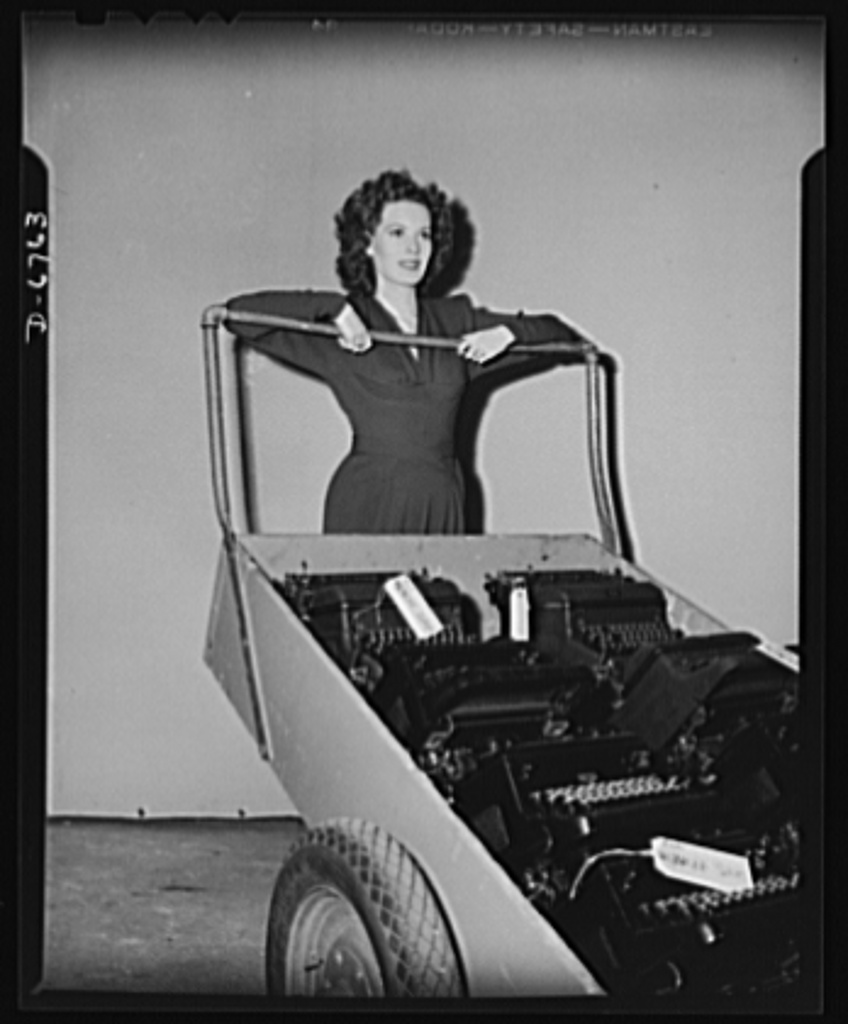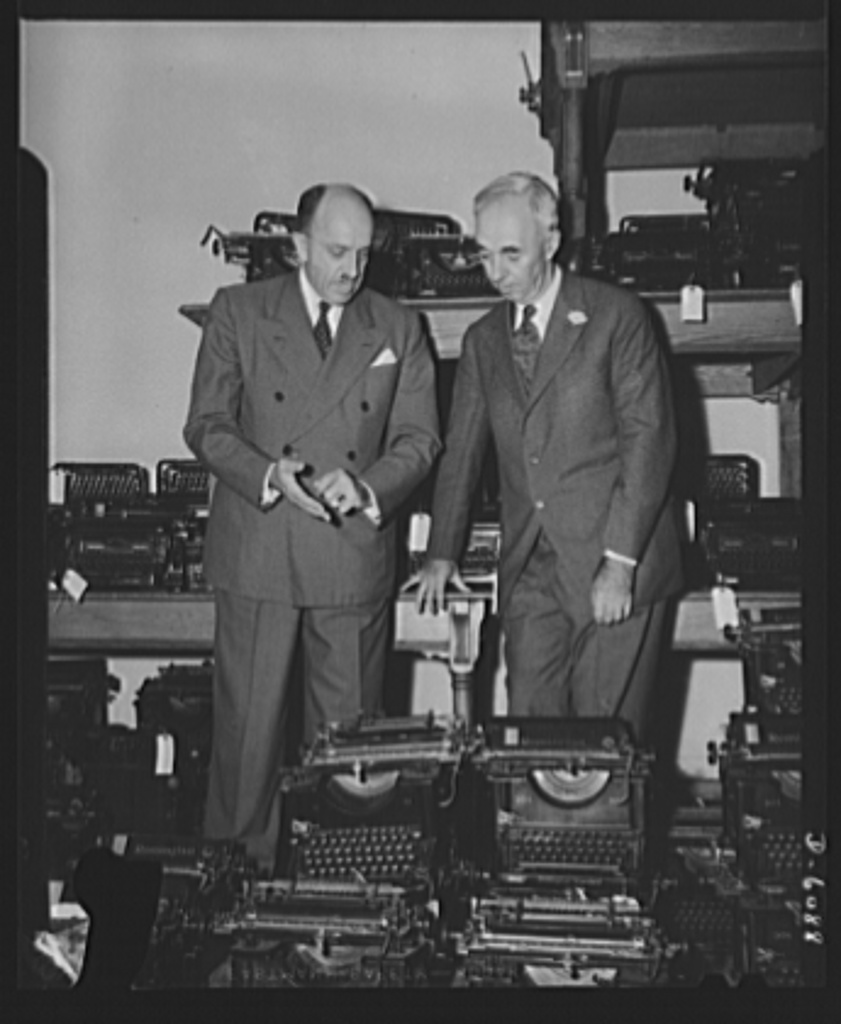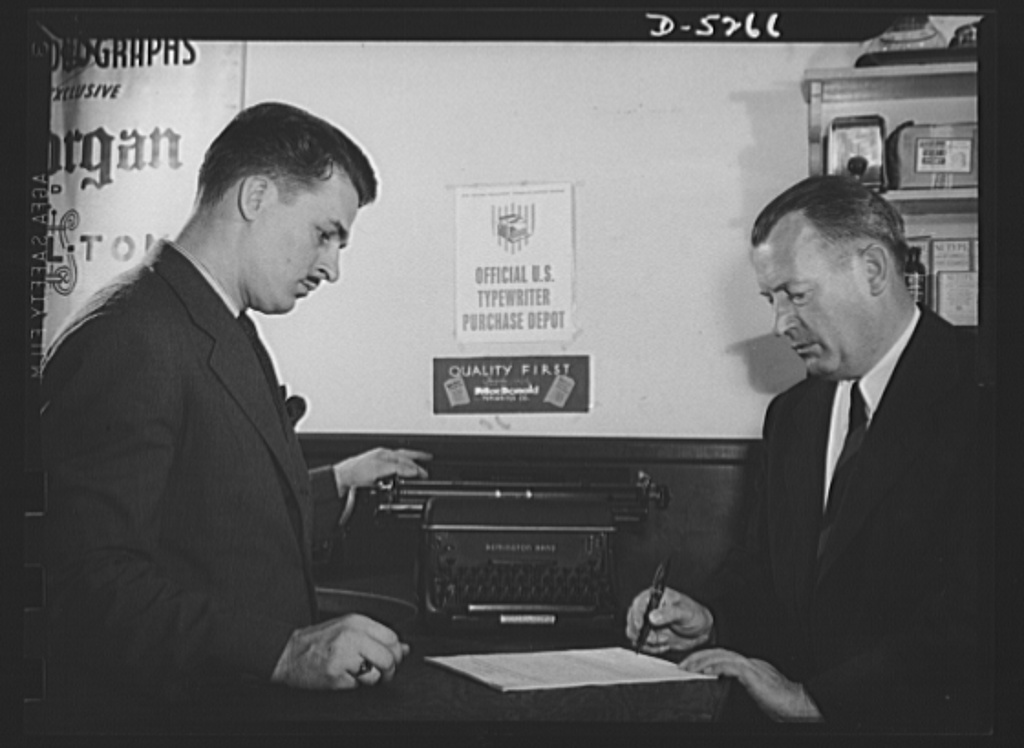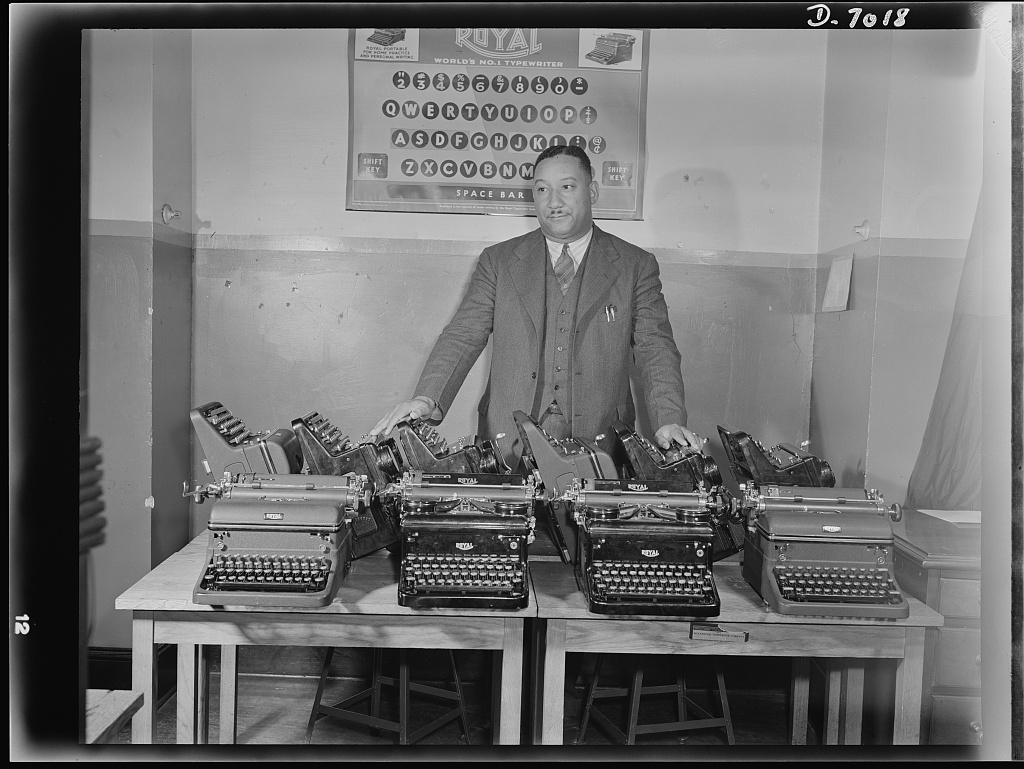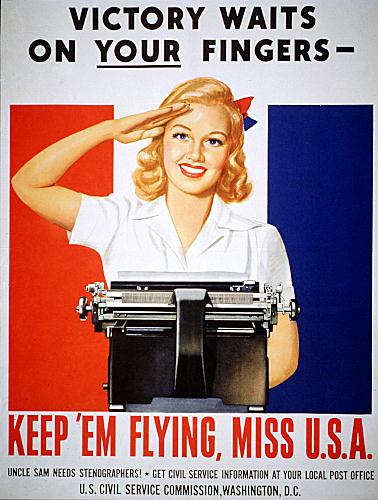TYPEWRITERS FOR VICTORY. LIBRARY OF CONGRESS PHOTO
By Elliot Carter
Tens of thousands of people found employment in Washington during World War II in newly created defense jobs. According to WETA, “between 1940 and 1945, the number of civilians employed by the government almost quadrupled.”
This army of office workers, mostly “government girls,” arrived to find a city sorely lacking in office supplies and equipment. Typewriters were a particular problem – the government needed 600,000 of them for use in DC and overseas. Some offices explored the idea of working around the clock on shifts to minimize idle typing time.
Typewriter companies had been asked to retool their factories to support the larger war effort. Underwood and Smith-Corona produced rifles, and the Royal Typewriter Company produced airplane parts. Unfortunately, this coincided with the huge spike in demand for their products and led to a great wartime typewriter shortage.
“Something drastic must be done. WPB has sharply curtailed typewriter production and Federal agencies are howling for tens of thousands of new typewriters” – Washington Post
Shortages of raw materials also played havoc with office operations. According to a Social Security Administration history, paper clips and rubber bands were used “over and over until they gave way from exhaustion, and then the steel and rubber were recycled.”
ROYAL TYPEWRITER COMPANY POSTER FOR THE CIVIL SERVICE COMMISSION
The pre-war, New Deal government had embraced a trigger happy approach to public relations, carpet bombing the media with press releases on the accomplishments of public sector programs. Wartime conservation brought that to an end. “One of the results of the defense program, beneficial or damaging depending on how you feel, is the fact that there will be fewer press releases from the type writers of Government press agents,” wrote the Washington Post. “The reason for it is a threatened shortage of mimeographing paper. Several department heads have ordered their information staffs to cut down on press releases to save paper.”
The government leaned heavily on a public relations campaign called “Forty-Two Keys to Victory” to fill the typewriter gap. Typewriter-heavy industries like Hollywood and the news media were pressured to contribute one out of every four machines.
Companies did their part by running advertisements to drum up support for the program.
“This we now realize, is the true meaning of total war … and we are for it, lock, stock, and barrel!” decreed the Royal Typewriter Company in an ad with a picture of a typewriter in front of an American flag. “It may be an inconvenience to you, may even be a sacrifice on your part, to do without a new Royal Typewriter. But … if the Axis powers were to win this war, it would be a long, long time before you could buy any new typewriter!”
Local dealers like the United Typewriter Co. (located at 813 14th Street NW) were prohibited from selling or renting their products from March 1942 until April 1944.
The Forty-Two Keys to Victory photos below are from the Library of Congress:

